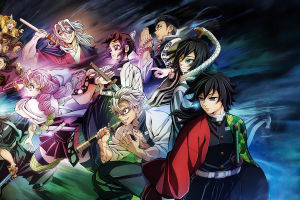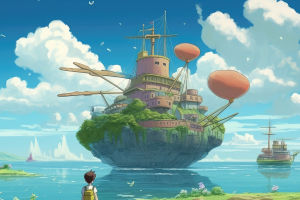Have you ever wondered what it really takes to create the anime you love? Beyond the vibrant visuals and captivating stories lies an intricate, passionate process involving countless artists, writers, and technicians working together in harmony.
Creating anime is both an art and a complex craft that merges imagination, technical skill, and teamwork to turn ideas into moving worlds. Let's dive deep into the fascinating journey of anime production—step by step—and uncover what makes this medium so special and alive.
Setting the Foundation: Planning and Pre-Production
The journey begins long before the first frame is drawn. Planning and pre-production form the crucial foundation for any anime. Writers, directors, and producers gather to conceptualize the story, define characters, and establish the visual style. This phase is like laying out blueprints for a house—you need a clear plan to bring a dream into reality.
Key elements include:
• Story Conceptualization: Writers craft the narrative arcs and themes, brainstorming to build a compelling world and characters.
• Character Design: Artists create detailed profiles and sketches, imagining not only how characters look but their personalities and emotions too.
• Visual Style and Art Direction: The overall "feel" of the anime takes shape here, with color schemes, motifs, and artistic techniques decided to convey the tone.
This collaborative process sets the creative direction and timeline for the entire project.
Turning Ideas into Images: Storyboarding and Animation
Once the story and style are mapped out, the production moves to storyboarding. This step translates the script into a visual plan detailing each scene's composition, timing, and camera movements. Think of it as a comic panel version of the episode; it guides animators on exactly how the story will flow visually. Storyboards often take weeks to finalize and serve as the backbone of animation production.
The animation itself happens in layers:
• Key Animation: Senior animators sketch the pivotal or "key" frames that mark important movements or expressions. These frames define character posture and major actions.
• In-Between Animation: Junior animators fill in the gaps between key frames to create smooth, fluid motion. This meticulous work is essential to turning static drawings into lifelike movements.
• Clean-Up and Coloring: Rough sketches are refined into polished illustrations, then colored digitally or by hand, enhancing depth and mood.
Adding Life: Voice Acting and Sound
The characters truly come alive when their voices are matched meticulously to their animated movements. Voice actors are carefully chosen for their ability to embody characters' personalities and emotions. Recording typically happens after initial animation passes, allowing actors to bring nuanced performances that complement the visuals.
Sound design also includes:
• Background music that sets the emotional tone.
• Sound effects that add realism or enhance dramatic moments.
The blend of voice and sound creates the immersive atmosphere that draws viewers into the story.
The Finishing Touch: Post-Production and Distribution
After animation and sound are completed, the project enters post-production. This includes final editing, compositing scenes together, adding special effects, and color grading to ensure visual consistency. Directors work closely with editors to fine-tune pacing and polish the final product.
Finally, the anime is prepared for distribution across TV, streaming platforms, and physical media. This stage is vital to reaching audiences worldwide, turning the months or years of work into shared entertainment and culture.
Why Knowing the Process Matters?
Understanding anime's behind-the-scenes magic deepens appreciation for the craft. It reveals the dedication and expertise required—and why producing even a single episode involves an team of talented individuals, countless revisions, and huge collaboration.
Moreover, the process shows how anime is both an artistic expression and a teamwork-driven industry. Each frame you see results from creative vision, technical mastery, and passion for storytelling.
So next time you watch your favorite episode, pause to think about all the stages it went through—how initial sketches became moving images, how voices gave soul to characters, how music amplified feelings. It's a complex dance of art and technology at its finest.
What part of anime production fascinates you most? The delicate hand-drawn frames, the voice actors' performances, or the final polished visuals? I'd love to hear your thoughts—because behind every anime is a story not just on screen, but in its making. Let's celebrate that remarkable creative journey together.


